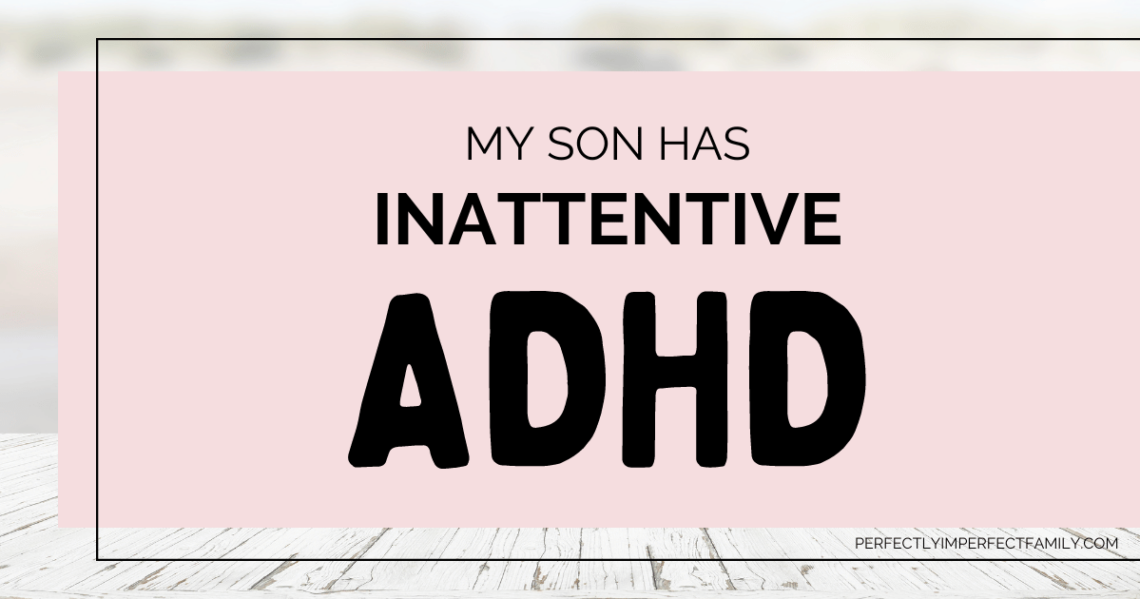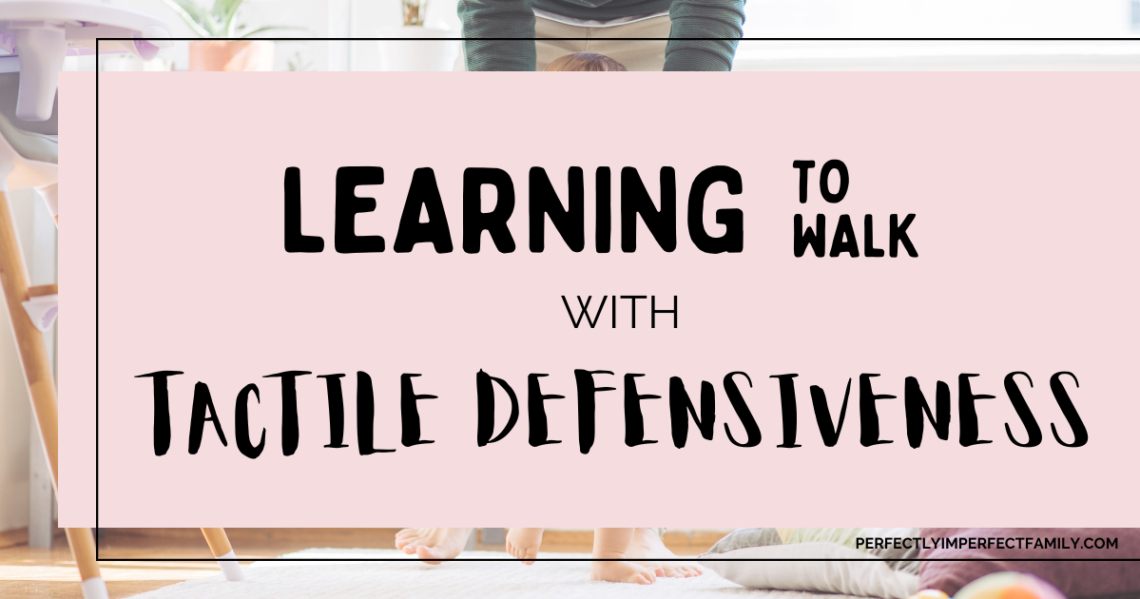My Son Has Inattentive ADHD
My son has Inattentive ADHD. Inattentive ADHD is a subtype of ADHD in which a person has a hard time focusing and paying attention, and doesn’t show the hyperactive behavior normal associated with ADHD. As I have come to understand my son and his diagnosis, I see that often kids with this type of ADHD are overlooked because they’re not hyperactive or causing disruptions.
One of my goals in writing this blog is to share the experience of what our family goes through with ADHD. I’ve written a lot about tactile defensiveness already, and today, I wanted to focus on ADHD. I’ll be honest, I don’t know where to begin with this topic. I feel like it is such a vast topic. I also know there are many of you that are dealing with the same challenges that I am. I don’t claim to be a professional on dealing with ADHD, but I’ve learned a lot in our challenges that I want to share. Everything I write about ADHD is from my own experiences working with my son.
Uncovering His ADHD Diagnosis
My son started showing signs that something was off in the first grade. Since he was our first child, we didn’t notice anything different. We didn’t think anything was wrong until his first grade teacher mentioned that he had a hard time following directions. We took it under advisement and continued to watch him, but we didn’t do anything that year because I still wasn’t sure if he was different from his peers.
In second grade, his teacher mentioned something about his ability to follow directions to us again, and that is when we decided that we needed to take him to the doctor to have him tested. My son was diagnosed with ADHD when he was in second grade. We had a lot of help from his teacher that year, and she was very supportive and we loved her for it!
When he’s unable to focus, you can think of it as he has a million thoughts running through his mind at once, and each one takes his mind on a different track of thought. He may be able to maintain focus for bit, but there are a lot of other thoughts competing for his attention.
After he was diagnosed, it was apparent to my husband and I that he needed a little help to be able to focus in school so we decided that we would put him on medication. You can read our experience on Should You Medicate Your Child for ADHD?
It has been a long journey over the years. We have been through a lot of challenges with him. There has also been some good times as well. Even through all the challenges I wouldn’t change it for anything.
There are so many challenges and experiences that come with an ADHD diagnosis. I am planning to break down a lot of the things I have learned along the way, and things I struggle with. To continue to read about our experiences with ADHD, please subscribe below.
Follow Perfectly Imperfect Family.com
I would also love to hear from any one that is has a child that has ADHD and how you have managed it. Please, come on this journey with me!
What Is ADHD Inattentive Type?
When my son was about eight years old, he was diagnosed with ADHD inattentive type. For those that don’t know what this means, I will try and explain and help you understand.
Attention Deficit Hyperactivity Disorder (ADHD) inattentive type means you have a hard time staying focused on tasks, struggle to pay attention to details, get distracted easily, have a hard time staying organized, and even with a routine will still forget things. Hyperactivity is very minimal.
Staying Focused
Those who have ADHD inattentive type have a hard time staying focused on what they’re doing. For instance, my son has a hard time staying focused on anything for very long.
The inability to remain focused on schoolwork, tasks, or long-term projects is another symptom of inattentive ADHD. This trouble with focus is most easily observed in a classroom, during playtime, or at recess, as these children present difficulty committing to an activity for any significant amount of time.
His biggest challenge is that he is unable to stay focused at school and will often forget the simplest things such as what his homework is that day, or to turn in an assignment that is due, or you’d be shocked about how many times he has forgotten to put his name on his assignments when he turns it in.
Paying Attention to Details
Paying attention to details can be a problem at school. My son’s teachers can tell him things, and he forgets everything his teachers have said. He will miss assignments or turn something in late because he didn’t pay attention to when the assignment was due.
A child with inattentive ADHD may not pay careful attention to classroom assignments or household chores. Accordingly, a lack of attention to detail can be classified as a symptom if the child displays consistent careless mistakes or almost never completes a task thoroughly.
Distracted Easily
Getting distracted easily is one of the areas that I notice a great deal at home. I will ask him to take something downstairs and come back, and he never comes back. He will take the item downstairs and not even put it away where I ask, and then he gets distracted doing something else and doesn’t come back. I will ask him to shower, and he gets distracted and forgets to even get in the shower. Just like when he was younger, I had to ask him to do one thing at a time.
A child with inattentive ADHD frequently becomes distracted, even during tasks that are typically enjoyed. This behavior is often most noticeable when the child is telling a story, playing with friends, or watching TV and movies.
Staying Organized
This area is a big one. My son His room is constantly a mess. My son cannot keep anything organized, and I mean anything. Over the years, we have realized that he can only have minimal things in his room, or it gets incredibly messy. This also affects him at school. He cannot organize all of his papers and assignments. We, as his parents, have to work very closely with his teachers to keep him organized.
Having a Schedule
Having a schedule and a routine is very important to us. Even though we try and have a routine for my son, it doesn’t always work to keep on task. It does most of the time, but he can still get distracted even when he is doing his routine.
That explains most of the primary areas in which my son has struggled.
Our Experience With an ADHD Diagnosis
Our son was pretty young when he was diagnosed with ADHD, inattentive subtype. He was halfway through second grade. He would have been seven, turning eight. It would have taken us much longer to have my son tested for ADHD if it weren’t for his second-grade teacher. I am incredibly grateful for her.
I have a hard time remembering what happened last week, let alone ten years ago! Bear with me while I recall these events. When my son was a baby, I never really noticed anything, at least not that I remember. I didn’t start seeing anything different until he was a little older. I wasn’t paying much attention because we focused on understanding his tactile defensiveness and getting a diagnosis for that.
Looking back on it, the only thing that I remember that would have made me question ADHD is that he could never do two-step commands. I always had to ask him to do one step at a time. For example, I could never ask him to put his shoes on, get his coat on, and then put his book bag on in one sentence. I had to break up my instructions.
In first grade, his teacher mentioned that he had difficulty following directions. I just thought that was my son being my son. I didn’t know anything about it, so we didn’t do anything. His first-grade teacher ended up having my son tested at the school without our permission. That made me pretty upset. I wasn’t upset that he got tested, just that his teacher didn’t inform us or ask for our approval. With that incident with his teacher, we didn’t do anything further.
When he got in second grade, my son’s teacher talked to us at the Parent-Teacher Conference. She said the same thing as his first-grade teacher. He had a hard time following instructions, and he got distracted easily. She was the one who said we might want to get him tested outside of school. That is where his diagnosis started.
After we met with her, I contacted his pediatrician. We met with him, and he referred us to a specialist at the university where we live. Once we met with the specialist, he decided my son needed to get tested. That was a significant process. We had to fill out pages and pages of paperwork about my pregnancy with him, how delivery went, how he was as a baby and a toddler, and how he was at home. His teacher also had to fill out paperwork on how he was at school. The paperwork took us a couple of weeks to complete.
Once all the paperwork was complete, the doctor had us bring our son to the office so he could have some testing done on a computer. I am not sure what he did on the computer. We were not allowed in the room while he was taking that test. They explained it to us, but I can’t remember what it was.
After all of that, the doctor finally told us that he had ADHD. He explained that there were different types and that our son had the inattentive type of ADHD.
I would love to say that we came home and researched ADHD and what it was and how to deal with it, and we became experts, but that is not how it went at all. After all of my research, and even after all these years, I am still learning new things about ADHD every day.
That was our experience getting our son diagnosed. I would love to hear from others about your experience of having your child or children diagnosed.
A Mother’s Experience With Tactile Defensiveness
I am sure there are some of you reading this who are wondering what tactile defensiveness is. It is a term used to describe someone very sensitive to touch. As a result, someone who experiences tactile defensiveness is much more sensitive to touch than usual.
Our son has been diagnosed with tactile defensiveness. He received his diagnosis when he was 18 months old. As parents, we became concerned that he wasn’t walking or trying to walk. It also concerned us that he would pull his feet up to avoid standing when we would try and have him stand up on our laps. Also, when we would try and have him stand up on the ground, he would do the same thing. He would never let the bottom of his feet touch anything and do everything he could to avoid it!
My husband and I asked our family doctor about our concerns, and he referred us to a physical therapist. When we went to the physical therapist, our son was diagnosed five minutes into our appointment. It was extremely quick. It surprised me, but the therapist immediately knew our son’s diagnosis as he watched our son’s behavior! Our son avoided physical contact because of how things felt on his skin. The therapist explained it like this to me. He said that when you cut your fingernails too short, the skin under the nail gets exposed, and it feels weird. He said that is the feeling my son has all over his body.
After I learned what it was, we realized that there were signs of it from the day he was born. He would always cry whenever we would change his diaper. He would also cry and scream whenever we bathed him, and I would rub lotion on him. He hated that.
He also didn’t like to touch things with his hands. He didn’t want to touch anything slimy or gooey. We would have him play with shaving cream or pudding with his fingers. He hated this and didn’t do very well with this one.
He was never a great eater either. When he got a little older, maybe age two or two and a half, we realized that he had tactile defensiveness in his mouth. He hated baby food. He hated fruit or veggies. He liked more solid things, like chicken nuggets or quesadillas. His eating to this day, ten years later, is still our biggest challenge. His list of foods that he will eat is minimal. And when he does eat, he picks at things and puts a small amount of food in his mouth. Eating for him is a chore. I am always trying to find something that he will eat, and I get frustrated when he doesn’t like most things I make.
Tactile defensiveness is something our son will have to deal with his entire life. He has just learned to live with most of the things he doesn’t like to touch. Some things will always be a challenge for him, mainly his eating. Now that he is getting older, there are just simple things that you wouldn’t think about, like face wash. Just washing his face is a struggle. We quickly learned that he could not use the foaming face wash! There are just so many tiny things that pop up as he gets older that we work through. He is a great kid and works through everything so well.
So, where are all my people out there who have someone with tactile defensiveness in their lives? I would love to hear from you.
Learning to Walk With Tactile Defensiveness
After our son was diagnosed with tactile defensiveness, we had much to learn. As parents, we needed to understand what tactile defensiveness was. Neither my husband nor I had ever heard of it before. We also needed to know what we could do at home to help him. We also had to educate our families on it. No one in our families had heard of it either.
Our number one concern after his diagnosis was helping him learn to walk. It took us almost five months to achieve this goal, from the diagnosis to his being able to walk on his own. We took these steps as parents to help him learn to walk.
1. Physical Therapy
We would go to physical therapy regularly. We would never have known what to do if we hadn’t kept going. There were so many different activities at physical therapy that they would do with our son. I can’t remember everything that they did, but the one thing that they used was hanging beads. All they would do is have our son put his feet under these hanging beads, and they would make them swing across his feet. At first, he hated this, but eventually, he got used to it. They always gave us this to do at home when we went to therapy.
2. Brushing His Feet
One of the primary activities the therapist would have us do at home was brushing our son’s feet. It sounds a little weird, and you probably wonder what that is. Our therapist gave us this little sponge that was soft on one side, and on the other side, it had tiny bristles. All we would do would take his feet, and with the bristle side of the sponge, we would brush his feet. We would constantly brush up and down across the bottom of his feet. He did not like this feeling at all. It took a couple of weeks to get used to the sensation on the bottom of his feet.
3. Going Barefoot
We only took him outside in his bare feet for this one. We would have him touch his feet on different textures. We put his feet on the cement or in the sand. We would try anything we could think of that would feel foreign to him. The one he hated the most was the grass. It took him a long time to be comfortable touching the grass with his feet.
4. Using a Walker
The last thing that the therapist had us do was use a walker. He needed the walker to get strength in his legs. You have to realize that he had never stood up on his legs at this point. When moms take their babies, hold them up on their laps, and stand up, you look at the baby while helping them stand. My son never did that. You never realize how that tiny little thing was such a big deal. Since he had never stood on his legs, they were weak. We used the tiniest little gold walker you would have ever seen. It only took him about a week to learn how to use the walker, and then he was off. We couldn’t slow him down after that. He used the walker for a couple of months.
After months of doing these things, our son finally started walking independently. It was the best day of his life when he could finally walk without any help. Walking hasn’t been his only setback. He also had to learn how to touch things with his hands. To this day, eating has been and continues to be the biggest obstacle. Please read my other posts about the strange things we would do for him to get used to touching things and eating.




